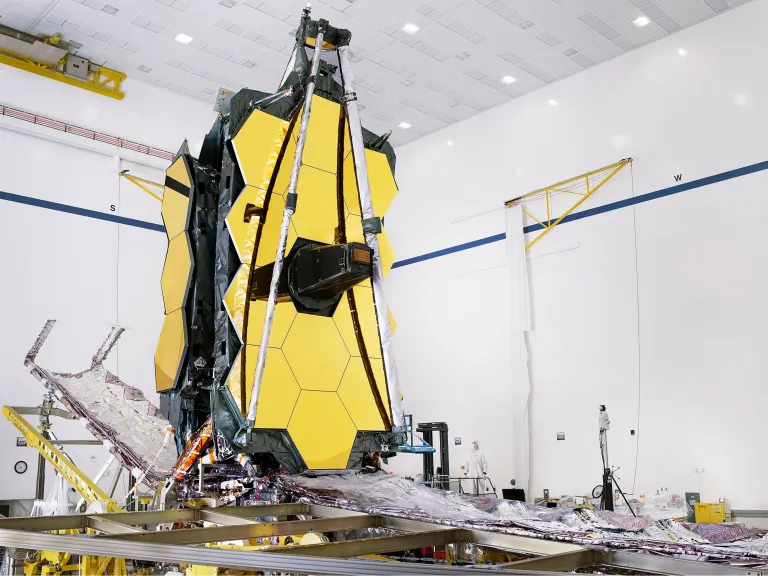The Stars and Our Curiosity
The stars have long captivated human attention. From the beginning of time to the present, people have pondered their origins while gazing up at the night sky. Are we alone in the universe? Since the launch of the James Webb Space Telescope (JWST), we have made great strides toward answering that question. Launched on December 25, 2021, JWST is the most powerful space telescope ever constructed and is already transforming our understanding of the cosmos.
What is the James Webb Space Telescope?
The James Webb Space Telescope is a joint project between NASA, the European Space Agency (ESA), and the Canadian Space Agency (CSA). It was developed as the successor to the Hubble Space Telescope, but with far greater technological capabilities and scientific reach. Unlike Hubble, which primarily observes in visible and ultraviolet light, JWST observes in infrared. This means it can detect heat and see objects invisible to the human eye, from distant galaxies hidden by dust to faint light from the earliest stars.
Features That Make JWST Extraordinary
At the heart of JWST is a 6.5-meter primary mirror composed of 18 gold-coated hexagonal segments, capable of collecting far more light than any previous space telescope. This immense light-gathering power allows astronomers to study incredibly distant and faint objects in unprecedented detail. Its infrared vision lets it peer through dense cosmic dust clouds, revealing the birthplaces of stars and planets and analyzing the atmospheres of exoplanets in search of potentially habitable worlds.
To operate with such sensitivity, JWST is shielded by a five-layer sunshield about the size of a tennis court, which blocks heat and light from the Sun, Earth, and Moon. This allows the telescope to remain at a frigid –233°C, a temperature essential for detecting faint infrared signals. Its location—1.5 million kilometers from Earth at a stable orbital position known as Lagrange Point 2 (L2)—provides a steady, interference-free view of the universe.
Scientific Goals and Discoveries
With its advanced instruments and strategic position, JWST is equipped to tackle some of astronomy’s most profound mysteries. Its ability to capture infrared light allows it to look back in time, observing galaxies formed just a few hundred million years after the Big Bang. This helps scientists better understand how galaxies, stars, and planets formed and evolved. It can also study the atmospheres of planets outside our solar system, identifying molecules such as water vapor, carbon dioxide, methane, and even ozone—possible indicators of habitability or life. By penetrating the dense gas clouds where stars and planets form, JWST offers a new perspective on the creation of solar systems, including our own.
Key Early Results
Since becoming operational in 2022, JWST has already delivered breathtaking scientific achievements. Its deep field images have revealed galaxies more than 13 billion years old, while detailed images of the Carina Nebula have exposed new stars in formation. It has also detected water and other atmospheric chemicals on exoplanets such as WASP-96 b and members of the TRAPPIST-1 system. These findings are only the beginning, with countless discoveries yet to come.
Why the James Webb Space Telescope Matters
The James Webb Space Telescope represents a new era in astronomy, enabling scientists to study the origins of galaxies, stars, and planets, explore the possibility of life beyond Earth, and piece together our cosmic history. It is more than a telescope—it is a time machine, capable of looking billions of years into the past to help us understand the story of the universe.
Conclusion
Among humanity’s greatest scientific accomplishments is the James Webb Space Telescope. It promises to reveal cosmic mysteries we have only imagined by granting us an unprecedented ability to see the universe as never before. As we admire the dazzling images it sends back, we are reminded of our enduring drive to explore, to understand, and to discover—the very traits that define what it means to be human.



